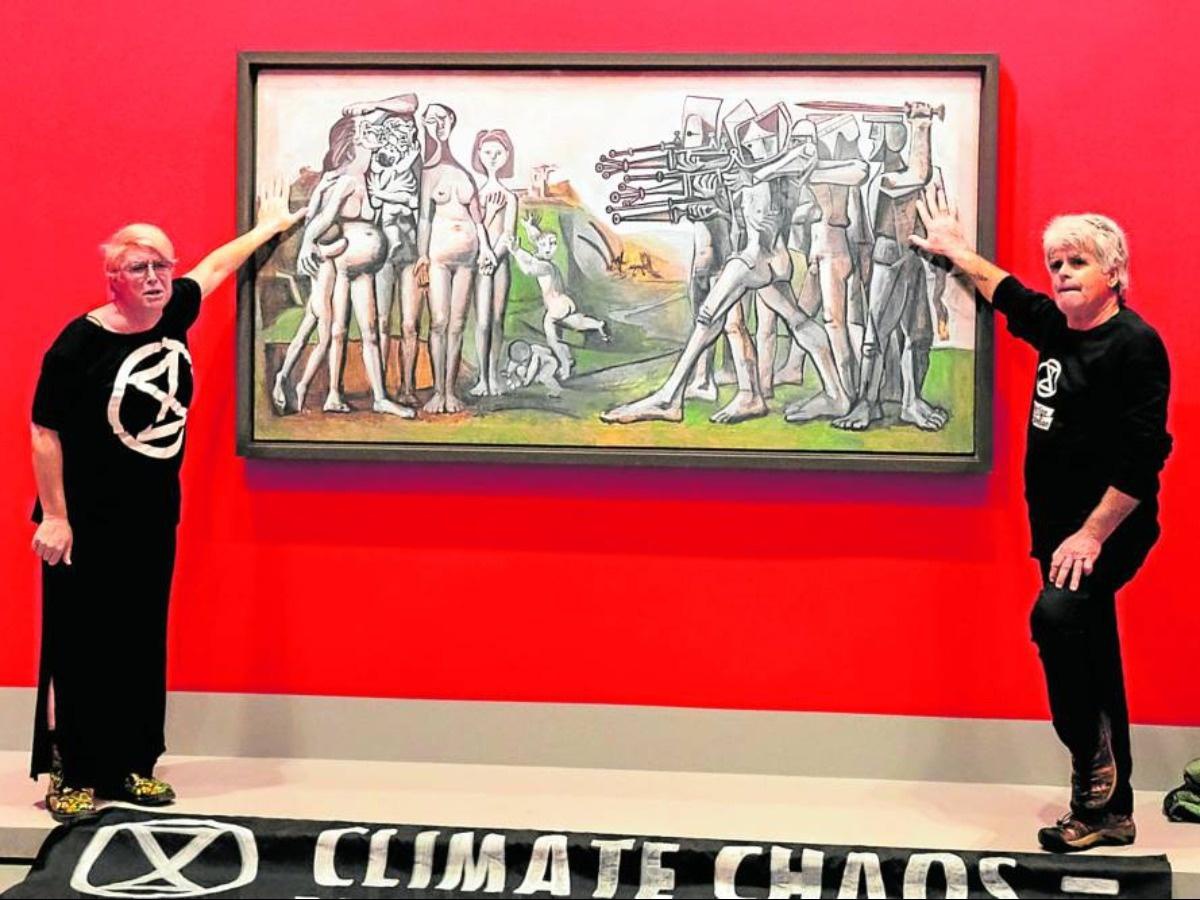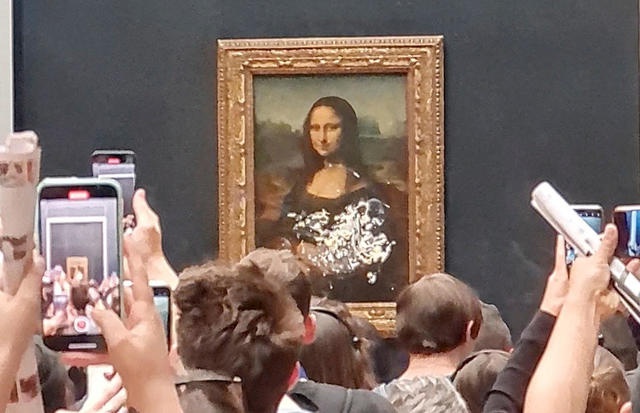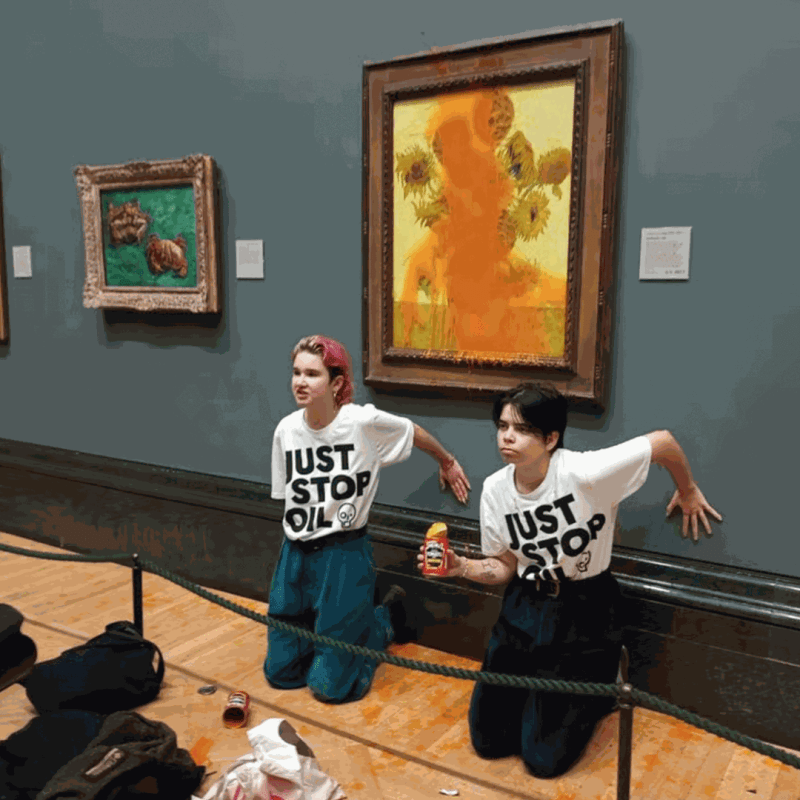From the Art Workers Coalition’s protest against the Vietnam War in front of Picasso’s Guernica (1970) to Nan Goldin’s demonstration against opioids at the Metropolitan Museum (2018), museums and galleries have historically been chosen as a site for powerful public protest. Their cultural profile and ease of access means that they are the perfect place to gain national attention for a cause. In recent years, artistic institutions have been increasingly targeted by climate activists, with the Museum Association even instructing galleries to tighten their security as a precautionary measure.
Over the weekend, two women appeared in court for criminal damage, after throwing tomato soup at Van Gogh’s Sunflowers in the National Gallery. This act marked the 14th day of ‘continuous disruption’ by the environmental protest group Just Stop Oil, who are trying to stop the production and use of fossil fuels in the UK. The women’s actions prompt the question, why are so many climate activists targeting art? We look at examples of some of the most memorable climate protests that have taken place in museums this year and map how climate protest and public art have become progressively intertwined.
The Hay Wain by John Constable

This July, Just Stop Oil, glued themselves to John Constable’s The Hay Wain at the National Gallery in London. Covering the idyllic 1821 landscape with a dystopian reimagining of the painting, the two protestors also glued their hands to the ornate gilt frame. Both activists wore t- shirts emblazoned with the slogan ‘Just Stop Oil’, announcing that they were there:
“because our government plans to license 40 new UK oil and gas projects in the next few years.”
As an artist, John Constable celebrated the picturesque English countryside and memorialised the British landscape during a time where it was being increasingly destroyed by Industrialisation. It could be argued that the climate collective picked this artwork as a site of protest due to the parallels between their mission and the artist’s sentiments. However, since then, they have also gone on to glue their hands to da Vinci’s Last Supper, Van Gogh’s Peach Trees in Blossom, as well as Van Gogh’s Sunflowers, so it seems more likely that the work’s status is also considered.
Massacre in Korea by Pablo Picasso

However, Just Stop Oil are not the only large environmental collective that are targeting galleries. Last week, two members of Extinction Rebellion in Australia were arrested for glueing themselves to Massacre in Korea by Pablo Picasso. The monochrome artwork depicts a firing squad taking aim at a naked group of women and was originally created in protest to the Korean War in 1951. Again relating their protest to the work itself, the activists lay down a banner beneath the artwork that read “Climate Chaos = War + Famine”. It seems increasingly common for protestors to target artworks that enhance the poignancy of their message, as well as targeting it for its fame and value.
Mona Lisa by Leonardo da Vinci

Most memorably, in May, a 36-year-old man smeared cake on the Mona Lisa in a purported protest against artists not caring about ‘the planet’. The bizarre incident, which was captured on several phones and was circulated on social media, is perhaps the best known of all public climate protests this year. Dressed as an old woman, the protestor jumped out of a wheelchair, before smearing cake on the glass protecting the masterpiece. The man then announced:
“There are people who are destroying the Earth ... That’s why I did this. Think of the planet”
It was later established that unlike other news-worthy protests, the man was not part of any larger collective and had planned the intervention alone. The Mona Lisa is one of the best-known artworks in the world and has been the subject of many attacks with each intervention adding to its infamous status. In 1911, it was stolen by a group of Italian handymen, before being returned 28 months later. Then, in 1956 a visitor attacked it with acid and in 2009, a woman threw a teacup at it, scratching the case. The work’s fame and perceived value means that it continues to be targeted as a place of protest.
